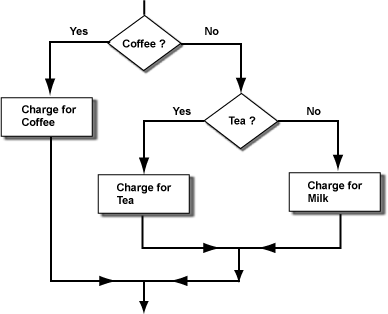The Second Question

You can think of the task decide between tea and milk as a "little program." It happens to be part of a larger program, but that is OK. Remember this fact from chapter 16:
A small task, part of the design for a complete program, is itself a small problem. The plan for solving this small problem will have its own control structures.
The skeleton for the complete program looks like:
ask if customer wants coffee
IF customer wants coffee THEN
charge for coffee
ELSE
' decide between tea and milk
ask if customer wants tea
IF customer wants tea THEN
charge customer for tea
ELSE
charge customer for milk
END IF
END IF
END
The choice between the three items can be made by asking two questions. The second question is asked only if the first question is answered "no."